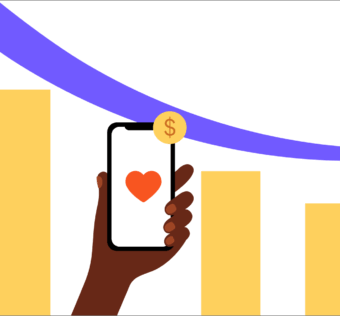Church Giving Trends: How a Giving App Can Help Flatlined Giving
Donations to religious institutions account for most of the charitable giving in the United States, but church giving has been falling for years. Today’s churches need to find innovative ways to encourage congregants and community members to donate more money.
Without a more effective approach, contributions will continue to decline. Donation apps could offer the solution that churches need to stay robust.
Church Giving Has Fallen or Flat-lined
If you doubt that churches face financial problems, just read the 2016 State of the Plate report. It paints a scary picture. The report shows that:
- 39 percent of churches say giving has flat-lined
- 20 percent of ministries say giving had fallen by at least five percent since
- Only 63 percent of congregants give 10 percent or more of their incomes to their churches
- People in their 20s and 30s miss church often, which makes it difficult to collect their donations
People Don’t Use Cash and Checks Like They Once Did
A lot of churches with falling donations don’t realize that they’re making it difficult for congregations to offer support. Some of them still pass collection plates expecting people to donate with cash or checks.
Unfortunately for these houses of worship, people don’t use cash and checks like they used to. Only 52 percent of millennials ever write checks. Those who do rarely write more than three per month.
The statistics don’t look much better for cash. According to a poll from Money Magazine:
- 42 percent of people carry $1 to $40 in cash
- 30 percent carry $41 to $99 in cash
- 17 percent carry $100 to $199
- 11 percent carry $200 or more
The vast majority of people sitting in your congregation have less than $99 in their wallets. Many only use cash when necessary, so they reserve it for emergencies. In other words, they aren’t going to put their emergency cash in your collection plate.
Giving Apps Could Boost Donations
Many people don’t carry cash or checks because they’re used to paying for things with their mobile devices. This is especially true of millennials, who live significant parts of their lives online.
If you want to attract more donations from young people, then you have to give them a mobile-friendly option to pay. Giving apps make it easy for people to donate from home as well as from the pew. They just open their apps and choose how much they want to give.
Churches that keep up with the giving preferences of their congregants can expect to receive more donations. If you don’t adapt, then your church may fall into the 59 percent of institutions with flat-lined or declining donations.



